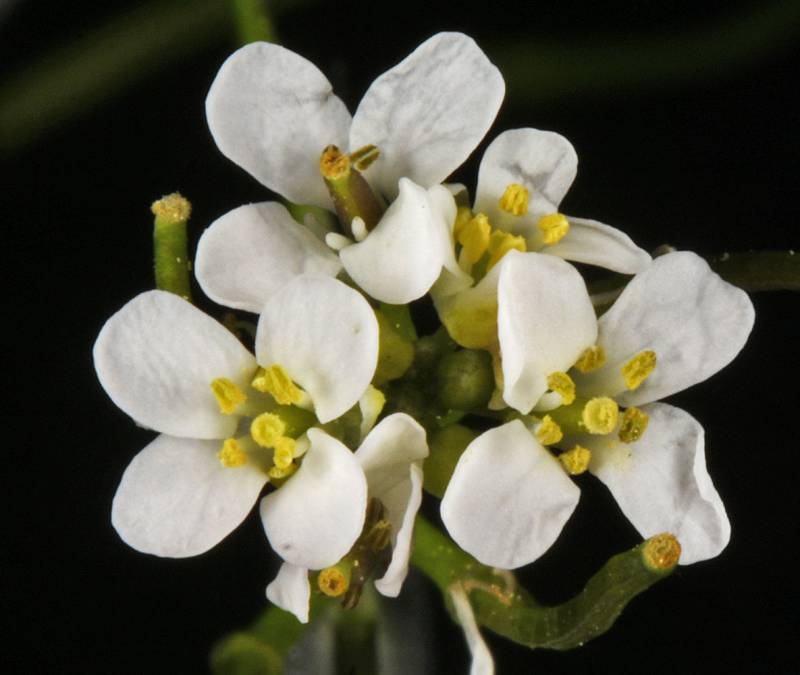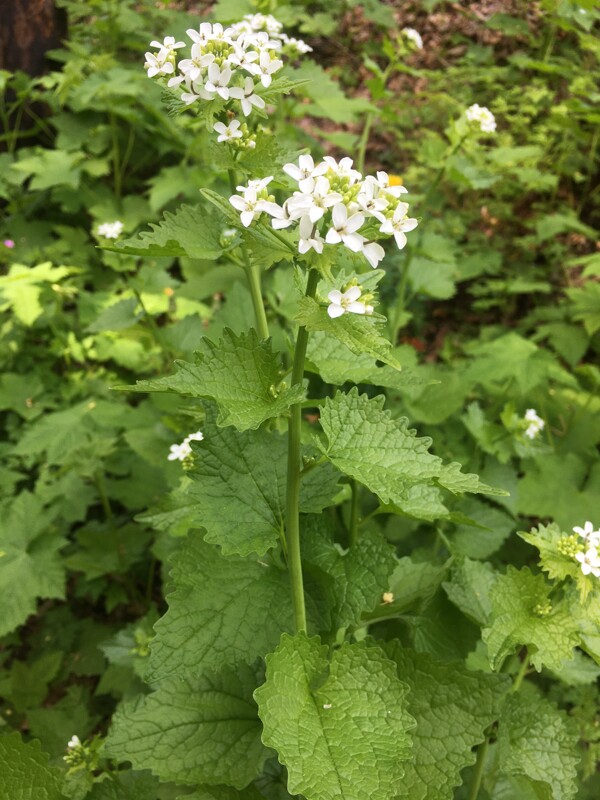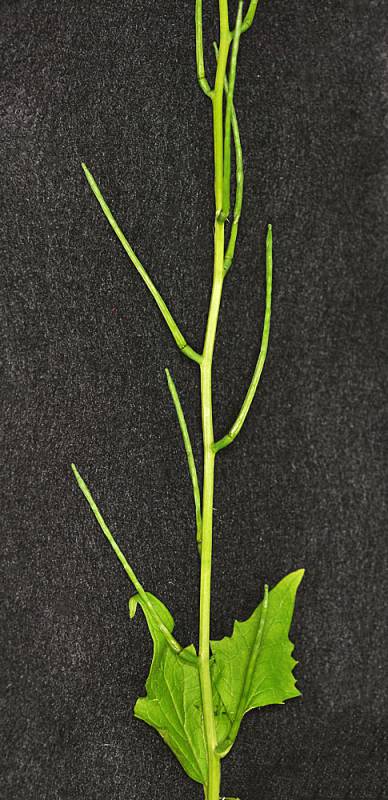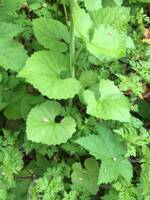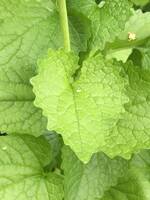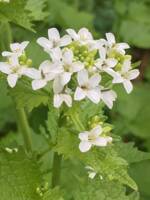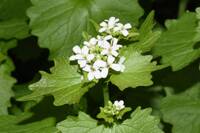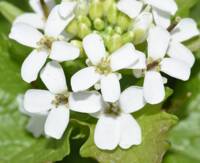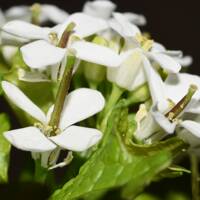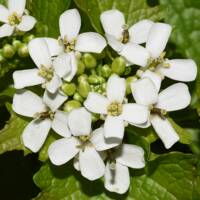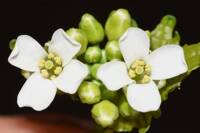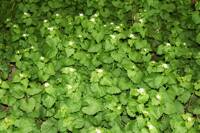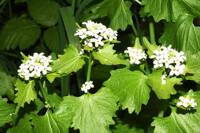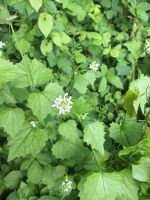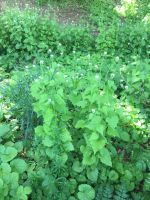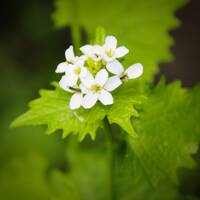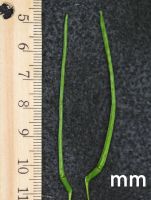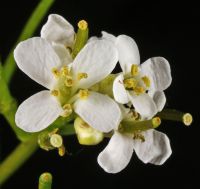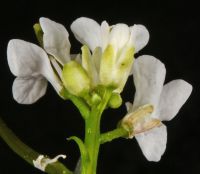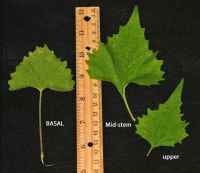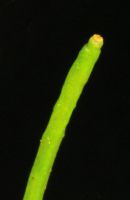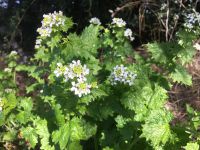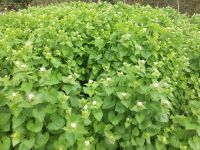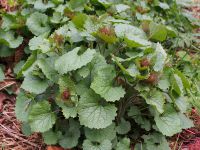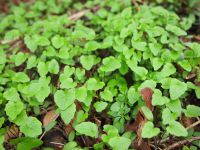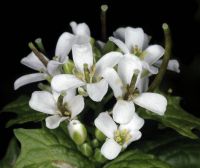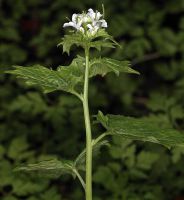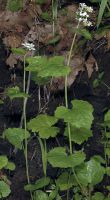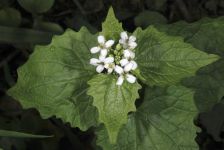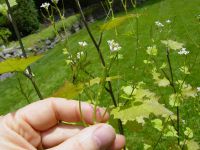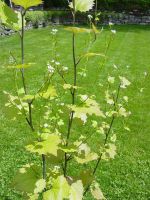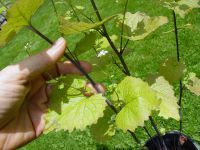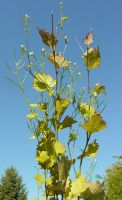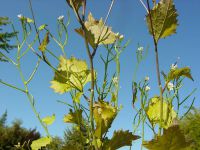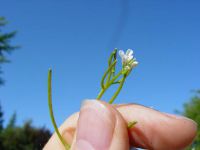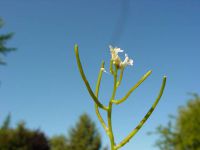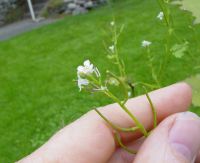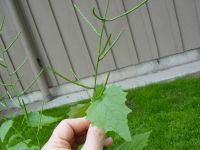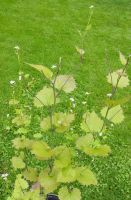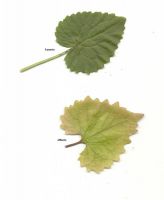Distribution: Occurring west of the Cascades crest in lowland western Washington; British Columbia to Oregon, also in Utah, widespread from central Great Plains to eastern North America.
Habitat: Disturbed forest understory, often where moist, at low elevations.
Flowers: April-June
Origin: Introduced from Europe
Growth Duration: Annual, Biennial
Conservation Status: Not of concern
Pollination: Bees, flies, butterflies
Biennial or short-lived perennial from a taproot, garlic-scented, the usually single stem erect, simple below the inflorescence, 3-10 dm. tall; herbage sparsely pubescent with simple hairs.
Basal leaves with reniform blades on slender petioles; cauline leaves alternate, numerous, petiolate, the blade deltoid, 3-6 cm. broad, coarsely wavy-toothed.
Inflorescence a simple or compound raceme, leafy-bracteate at base and bractless above, the pedicels stout, 2-6 mm. long; sepals 4, 3mm. long; petals 4, white, twice the length of the sepals, spatulate, short-clawed; stamens 6; style short, stout; stigma capitate.
Siliques 4-6 cm. long, quadrangular, spreading but arched upward, the tips often erect.
Publication: Bull. Orto Bot. Regia Univ. Napoli. 3: 418. 1913.
PNW Herbaria: Specimen records of Alliaria petiolata in the Consortium of Pacific Northwest Herbaria database
WA Flora Checklist: Alliaria petiolata checklist entry
OregonFlora: Alliaria petiolata information
E-Flora BC: Alliaria petiolata atlas page
CalPhotos: Alliaria petiolata photos

